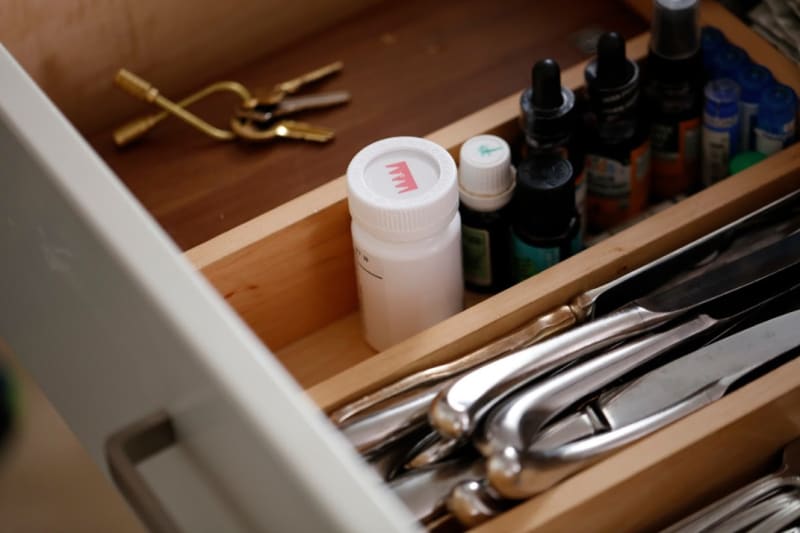Tell Me More: What's the Difference Between Finasteride 1mg and Finasteride 5mg?

In your search for solutions to your androgenetic alopecia (more commonly known as male pattern baldness), you’ve likely discovered the two medications that are clinically proven DHT blockers and can help stop hair loss: finasteride and minoxidil. Upon further digging, you may have noticed that finasteride is offered in two different doses—1mg and 5mg, which go by the brand names of Propecia and Proscar, respectively.
Since we live in a society in which more is better, it’d be natural for you to presume that the 5mg dose would be the smarter choice. Your hair will get stronger and stop falling out, and it’ll stimulate even more hair growth than the 1mg. Maybe you’ll end up with more hair than you had before. Good-bye, receding hairline! After all, it’s five times the strength—the stronger the dose, the more effective it’ll be, right?
Well, we hate to break it to you, but no. We spoke to our Keeps medical advisors, and that’s not what’s going to happen. Not even close.
“There are dose-ranging clinical studies that show finasteride 1mg is just as good as finasteride 5mg,” explains Dr. Jerry Shapiro, one of the Keeps medical advisors. “So there’s no reason to prescribe a higher dosage.”
In other words, finasteride 1mg is wholly sufficient. Finasteride 5mg will not help you treat male pattern hair loss any better than 1mg would.
You may be asking, “Then why does finasteride 5mg even exist? What’s the point of it?” Because while finasteride 5mg isn’t necessary to treat androgenic alopecia, it’s highly effective in treating another medical condition in males.
According to Keeps medical advisor Dr. Antonella Tosti, “Finasteride 1mg is approved for treatment of male pattern hair loss while finasteride 5mg is approved for the treatment of prostatic hyperplasia,” which is an enlarged prostate gland. In fact, finasteride was initially developed to treat prostate gland enlargement and prostate cancer, not hair loss. It wasn’t until 1997, five years after the FDA approved it to treat benign prostatic hyperplasia, that it was officially approved to help stop male pattern baldness.
Bottom line: “Finasteride 5mg is not more effective than finasteride 1mg in the treatment of male pattern hair loss,” Dr. Tosti says.
When it comes to stopping your hair from falling out and inducing hair regrowth, the 1mg dose is all you need. (Unless your hair loss is due to a scalp condition, such as dandruff or psoriasis).
Of course, if you’re looking to use finasteride or minoxidil to treat your hair loss, consult with a doctor first. In fact, you can get started with a free online consultation right now by clicking here.
The information provided in this article is not a substitute for professional medical advice, diagnosis, or treatment. You should not rely upon the content provided in this article for specific medical advice. If you have any questions or concerns, please talk to your doctor.
If you would like to learn more about finasteride, please see the full prescription information here. You are encouraged to report negative side effects of prescription drugs to the FDA. Visit MedWatch: https://www.fda.gov/Safety/MedWatch/default.htm or call 1-800-FDA-1088.